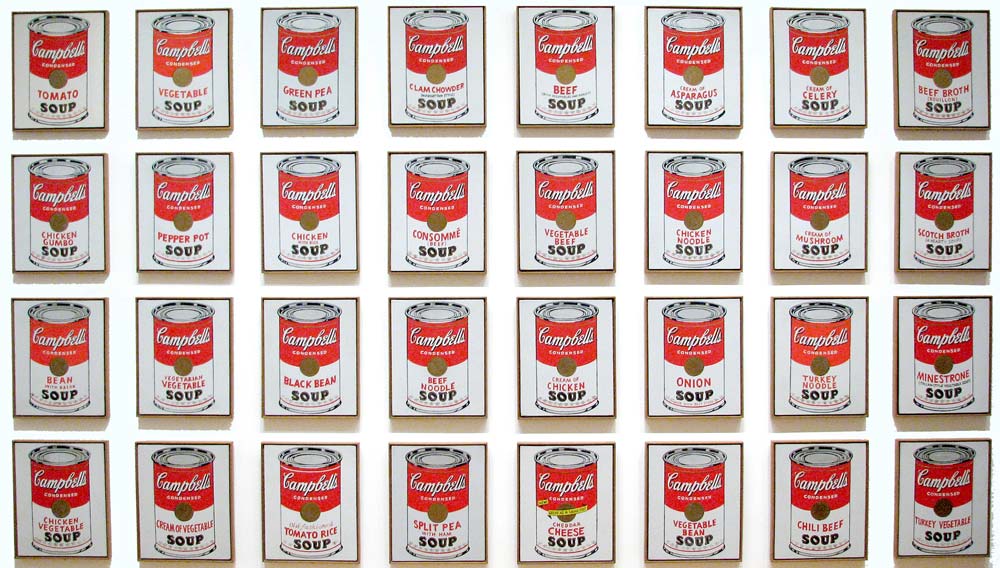Campbell’s Soup Cans by Andy Warhol was also known as the 32 Campbell’s Soup Cans. It was a popular artwork made in 1962, and it includes 32 canvases that measure 20 x 16 inches. The individual paintings by Warhol were made by a print-making method with the use of semi-mechanized tool for screen printing and a non-painterly style. The painting is based form the popular culture that helped to establish pop art as one of the largest art movements in the United States.
Warhol and His Famous Works
Warhol was a famous author, painter, film director and publisher. His one-man gallery exhibit in 1962 has helped him gain massive success as an artist. The gallery exhibition was held at the Ferus Gallery, which was located at Los Angeles, California. In fact, with this remarkable exhibit, he bolstered the fame of pop art in the United States. With the combination of non-painterly style and semi-mechanized tools in producing the images, he was able to create commercial-quality images of mundane objects. Moreover, his works have become a direct affront to abstract expressionism, which was popular during his era.
The artist produced an extensive variety of artworks that depicted Campbell’s soup cans, which were all made during the three significant phases of Warhol’s career. He also produced more artworks by using a number of images from the interesting world of mass media and commerce. At present, the theme depicted in the Campbell’s Soup Cans painting is used to refer the original set of artworks and later drawings of Warhol, which depicted this image. With the popularity of his paintings with similar themes, he earned a reputation not only as a remarkable pop art artist in the world, but also as the highest-priced American artist.
The Significance of the Modern Culture
Andy Warhol had a great view of the ordinary culture, and he believed that abstract expressionists seemed to ignore the wonders of modernity. Hence, he tried to express his optimistic view of the modern culture when he presented his artwork that featured the Campbell’s Soup Can series. He also intended to make his works rather void of individual expression or personality. Moreover, his pop artwork represents that variation is not always realistic, and he became known to represent the contemporary era of commercialization, featured in most of his works.
About the Artist
In 1949, Andy Warhol moved to New York City from the School of Fine Arts at the renowned Carnegie Institute of Technology. He gained immediate fame as a commercial illustrator, and one of his first sketches appeared in the 1949 summer issue of the Glamour Magazine. In 1952, Warhol opened to the public his very first art gallery show with an impressive display of works inspired by Truman Capote. Three years after, he began tracing photos borrowed from the public library at New York. He eventually hired Nathan Gluck as his assistant and started reproducing photos using a process he developed at Carnegie Tech. This process of photo reproduction foreshadowed his later works, and it involved the method of pressing wet ink-illustrations against the adjoining piece of paper.
